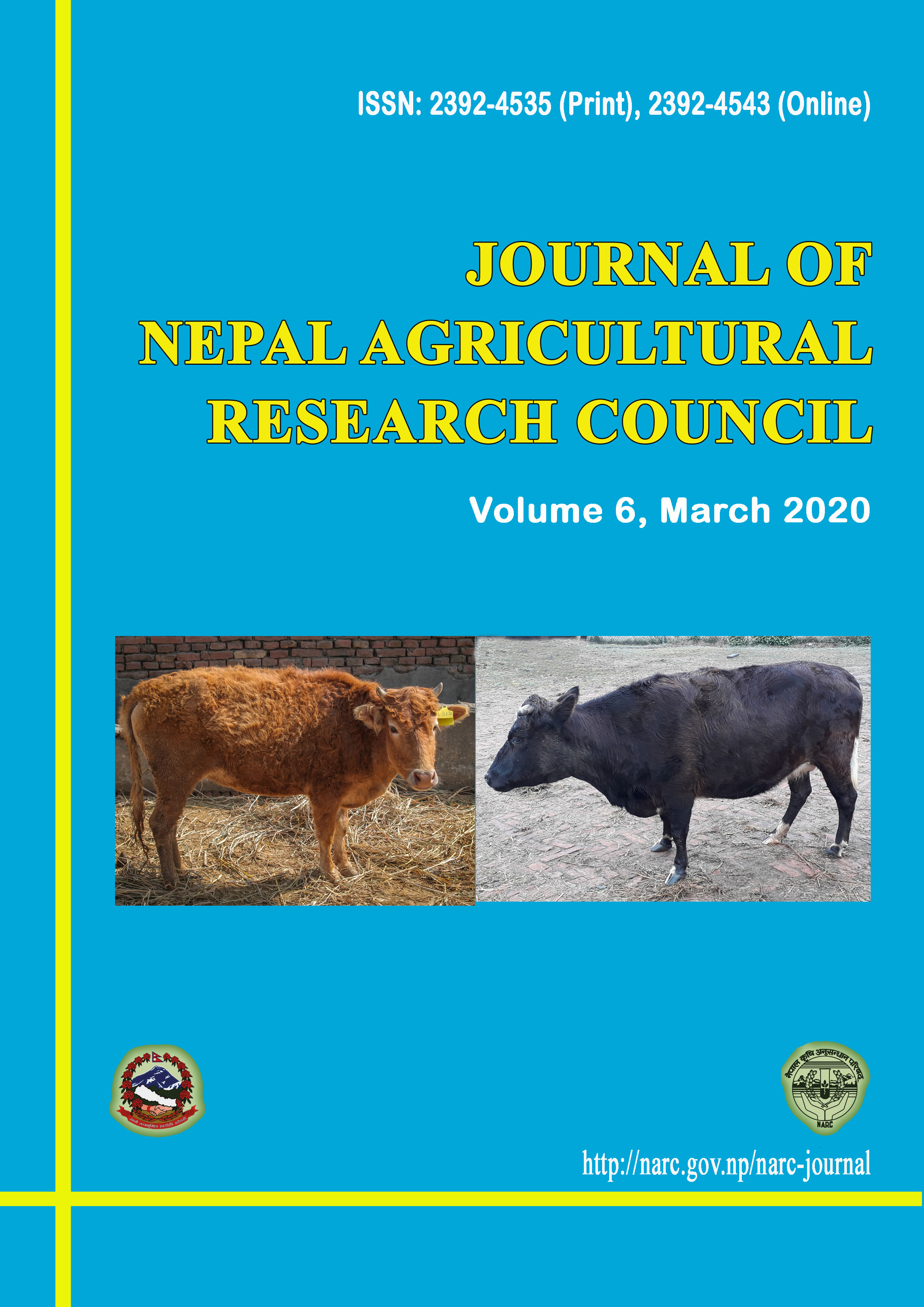Selective Breeding to Improve Productive and Reproductive Performances and Survivability of Indigenous Sakini Chicken
DOI:
https://doi.org/10.3126/jnarc.v6i0.28116Keywords:
Indigenous chicken, production, reproduction, Sakini, selective breedingAbstract
Indigenous chickens are quite popular in Family Poultry Production System (FPPS) in Nepal, but are constrained with their low productive performance. The present study evaluated the productive and reproductive performance of Sakini chicken in different filial generations and sexes. In addition, research also aimed at understanding the effect of generations on above performances. Initially, base populations (G-0) of Sakini were maintained by collecting eight weeks old birds from different agroecological zones of Nepal. Performance of the birds of G-0 was evaluated based on weekly body weight (12-24 weeks), laying performance, fertility, hatchability, hatch weight and survivability. Selected birds of base population (G-0) were used to produce first (G-1), second (G-2) and third (G-3) generations through selective breeding in each generation. Similarly, body weights at hatching, 12 weeks, 16 weeks, 20 week and 24 weeks were significantly (p<0.001) improved from G0 to G3 and were also significantly (p<0.001) differ for sex (males were always heavier than females). Likewise, there was significant (p<0.05) improvement in egg production (per hen per year), age at first lay (days), body weight at sexual maturity, egg number and egg weight at 90 days of laying in progressive generations. Fertility, hatchability and survivability significantly (p<0.05) improved in selected generations in comparison to base population, whereas, no significant difference was obtained within the different selected population. Thus, indigenous Sakini chicken under this experiment performed better with respect to survivability, fertility and hatchability in later generations that provides ample scope of advancing selective breeding activities within the indigenous population in order to bring significant improvement in the overall productive performance of Sakini chicken in Nepal.




